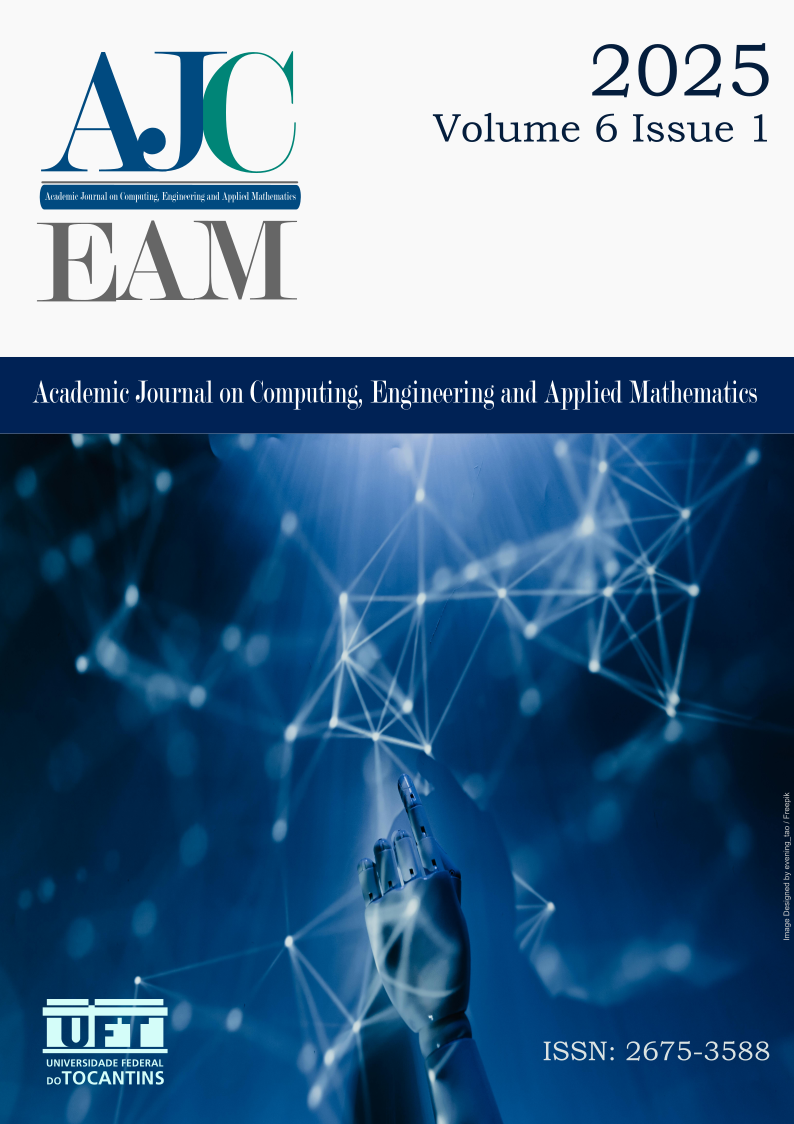Descrição formal das funções de ativação de modelos de aprendizado de máquina
DOI:
https://doi.org/10.20873/uft.2675-3588.2025.v6n1.p9-18Palavras-chave:
Inteligência Artificial, Matemática Aplicada, Funções de Ativação, ReLU, Sigmóide, TanH, Softmax, Método do gradienteResumo
Modelos de inteligência artificial são cada vez mais comuns em vários aspectos do dia a dia. Não só nos casos mais emblemáticas, mas também para casos corriqueiros como em sistemas de recomendação em sites de compras. Nesse sentido, é muito importante o entendimento de como esses modelos funcionam por parte dos desenvolvedores. Contudo, o uso massivo de bibliotecas para utilização desses modelos pode desfavorecer esse entendimento. Assim, esse trabalho traz a definição e demonstração formal das funções de ativação em modelos de aprendizado de máquina. Esse é um ponto fundamental para a introdução do assunto à novos desenvolvedores e cientistas que trabalharão na área. A descrição formal se aplica às clássicas funções ReLU, Sigmóide, tangente hiperbólica, softmax e gradiente descendente. Além disso, também são discutidos o impacto dessas funções no modelo LeNet-5 aplicado à base de dados MNIST.
Downloads
Publicado
Como Citar
Licença
Copyright (c) 2024 Julia Assunção Leal

Este trabalho está licenciado sob uma licença Creative Commons Attribution-NonCommercial 4.0 International License.
Autores que publicam neste periódico concordam com os seguintes termos:
- Autores mantém os direitos autorais e concedem ao periódico o direito de primeira publicação, com o trabalho simultaneamente licenciado sob a Creative Commons Attribution License (CC BY-NC 4.0), permitindo o compartilhamento do trabalho com reconhecimento da autoria do trabalho e publicação inicial neste periódico;
- Autores têm autorização para assumir contratos adicionais separadamente, para distribuição não-exclusiva da versão do trabalho publicada neste periódico (ex.: publicar em repositório institucional ou como capítulo de livro), com reconhecimento de autoria e publicação inicial neste periódico;
- Autores têm permissão e são estimulados a publicar e distribuir seu trabalho online (ex.: em repositórios institucionais ou na sua página pessoal) a qualquer ponto posterior ao processo editorial;
- Além disso, o AUTOR é informado e consente com o periódico que, portanto, seu artigo pode ser incorporado pela Academic Journal on Computing, Engineering and Applied Mathematics em bases e sistemas de informação científica existentes (indexadores e bancos de dados atuais) ou a existir no futuro (indexadores e bancos de dados futuros), nas condições definidas por este último em todos os momentos, que envolverá, pelo menos, a possibilidade de que os titulares desses bancos de dados possam executar as seguintes ações sobre o artigo:
- Reproduzir, transmitir e distribuir o artigo, no todo ou em parte sob qualquer forma ou meio de transmissão eletrônica existente ou desenvolvida no futuro, incluindo a transmissão eletrônica para fins de pesquisa, visualização e impressão;
- Reproduzir e distribuir, no todo ou em parte, o artigo na impressão;
- Traduzir certas partes do artigo;
- Extrair figuras, tabelas, ilustrações e outros objetos gráficos e capturar metadados, legendas e artigo relacionado para fins de pesquisa, visualização e impressão;
- Transmissão, distribuição e reprodução por agentes ou autorizada pelos proprietários de distribuidoras de bases de dados;
- A preparação de citações bibliográficas, sumários e índices e referências de captura relacionados de partes selecionadas do artigo;
- Digitalizar e / ou armazenar imagens e texto de artigo eletrônico.



